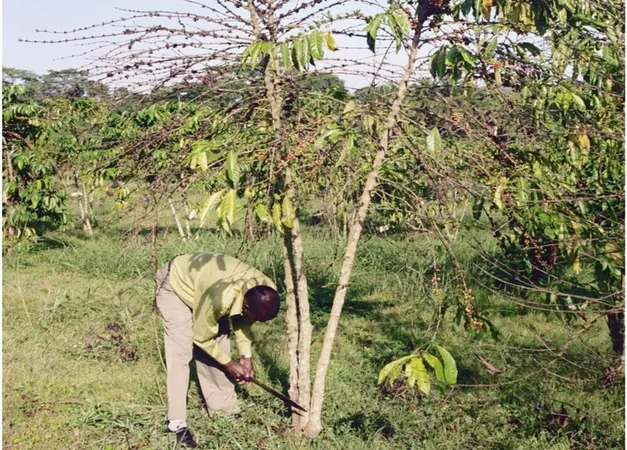
Breakthrough Study Uncovers Genetic Secrets of Wilt Disease Threatening Coffee Production!
2024-12-09
Author: Jacob
Introduction
In an exciting advancement for agriculture, a collaborative team of researchers from prestigious institutions including Imperial College London, the University of Oxford, and CABI have made significant strides in unraveling the complex genetic mechanisms behind wilt disease, particularly its devastating effects on the Arabica and Robusta coffee varieties.
The Threat of Fusarium xylarioides
The fungal pathogen Fusarium xylarioides has long been a formidable adversary for coffee growers across sub-Saharan Africa, continuing to wreak havoc on the continent's coffee production and the livelihoods of millions. With coffee serving as a vital source of income for over 12 million households, the implications of this research are profound. In countries like Ethiopia, coffee exports alone contribute an astonishing US$762.8 million annually, making it crucial for the economy.
Historical Context
Despite significant agricultural efforts, coffee wilt disease has consistently plagued east and central Africa since the 1920s, leading to substantial losses in yields and farmer incomes. This study not only sheds light on the biology of the pathogen but also gives hope for systemic changes in disease management strategies.
Genetic Analysis of F. xylarioides
To better understand the evolution of F. xylarioides, the team compared the genomes of 13 historical strains collected over six decades from CABI's Culture Collection. Dr. Lily Peck from Imperial College London emphasized the importance of understanding the genetic make-up and evolutionary pathways of this fungal threat for effective disease management strategies.
Distinct Lineages
Notably, the study revealed that F. xylarioides consists of at least four distinct lineages: one is specifically adapted to Arabica coffee, another to Robusta, while two historic lineages were isolated from a variety of coffee species. The research highlighted the role of horizontal gene transfers—where genes important for infection are exchanged—between these lineages, leading to increased host specificity.
Mobile DNA Sequences
Additionally, researchers discovered that these Fusarium populations contained sections of the pathogenicity chromosome enriched with mobile DNA sequences, known as 'jumping genes,' that are capable of movement within the genome and play a critical role in the pathogens' adaptability. This genetic flexibility is not limited to fungi; similar mechanisms can be found across various organisms including bacteria, yeast, and even mammals.
Implications of Genetic Interchange
The researchers further noted that the genetic interchange between F. xylarioides and another prevalent fungus, F. oxysporum, may allow F. xylarioides to enhance its pathogenic virulence, resulting in recurrent epidemics of coffee wilt disease. Dr. Matthew Ryan, co-author of the study and a Senior Research Lead at CABI, highlighted the significance of these findings in understanding the broader implications of such genetic interactions among fungi, which could lead to developing effective strategies to combat this ongoing threat.
Conclusion
As coffee prices continue to fluctuate and climate challenges intensify, the findings of this study may pave the way for innovative solutions to safeguard one of the world's most beloved beverages... and the many lives dependent on it!









 Brasil (PT)
Brasil (PT)
 Canada (EN)
Canada (EN)
 Chile (ES)
Chile (ES)
 España (ES)
España (ES)
 France (FR)
France (FR)
 Hong Kong (EN)
Hong Kong (EN)
 Italia (IT)
Italia (IT)
 日本 (JA)
日本 (JA)
 Magyarország (HU)
Magyarország (HU)
 Norge (NO)
Norge (NO)
 Polska (PL)
Polska (PL)
 Schweiz (DE)
Schweiz (DE)
 Singapore (EN)
Singapore (EN)
 Sverige (SV)
Sverige (SV)
 Suomi (FI)
Suomi (FI)
 Türkiye (TR)
Türkiye (TR)